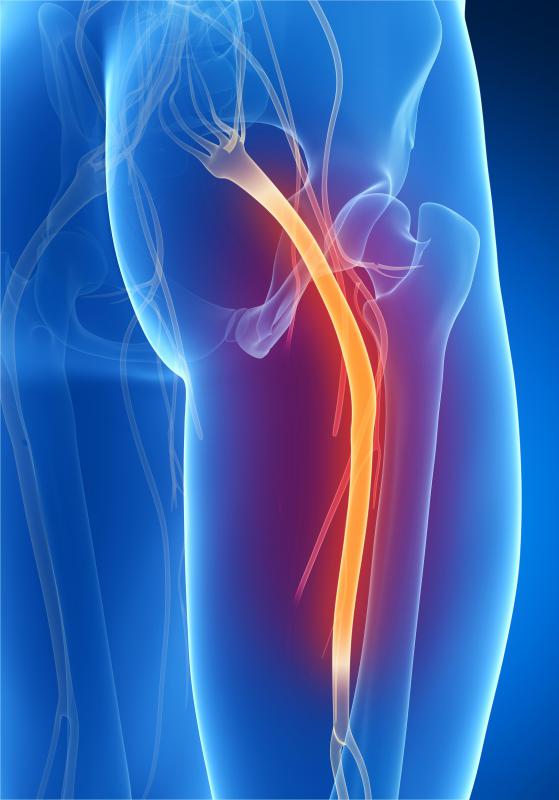At WiseGEEK, we're committed to delivering accurate, trustworthy information. Our expert-authored content is rigorously fact-checked and sourced from credible authorities. Discover how we uphold the highest standards in providing you with reliable knowledge.
What is the Common Peroneal Nerve?
The common peroneal nerve branches from the sciatic nerve within the knee regions, and most specifically it is derived from L4, L5, S1, S2. The nerve enables physical feeling and movement of the lower legs, toes and feet, which is why it is considered to be notably important. It binds around the ulnar nerve and provides lifting, stretching and motion abilities. It stimulates the Peroneus brevis muscle as well as the Peroneus longus. It also branches out, and along with the superficial peroneal nerve forms the lateral cortex of the fibula. Patients that suffer from dysfunction of the common peroneal nerve endure a disorder known as peripheral neuropathy.
Such a condition might develop if a person does damage to the common peroneal nerve, due to some kind of injury or trauma in the knee area. It is not unknown for other stimulus of dysfunction to be caused from wearing high boots, crossing of legs while sitting, or pressure endured by the knee during a state of deep sleeping. Most commonly, patients that acquire such a disorder are irregularly thin. This is yet another reason why providing proper nourishment is essential in such cases.

The major problem that occurs after damaging the peroneal nerve is its slow and painstaking recovery. The medical manipulations available include surgical suture and decompression. The latter basically connects the nerve’s branches with the proper muscle that they are to stimulate.
If not damaged, common peroneal nerves are multifunctional. They help people to walk straight, provide strength in the ankle and feet areas, and ensure sensitivity in the lower leg. That is why when injured, they fail to support these functions and patients complain of weakness in the ankles, feet and toes and walk with effort. Numbness is also known to occur in such cases.
The advantages of a healthy common peroneal nerve also include control of specific lower leg muscles. All muscle tone and ability to control that area is otherwise lost, which will ultimately lead to muscle tissue degeneration.
Patients suffering from conditions connected to the impaired function of the common peroneal nerve should monitors it to catch the disorder in early stages of development. Any suspicion of this condition should be discussed with a patient's doctor.
AS FEATURED ON:
AS FEATURED ON:

















Discuss this Article
Post your comments